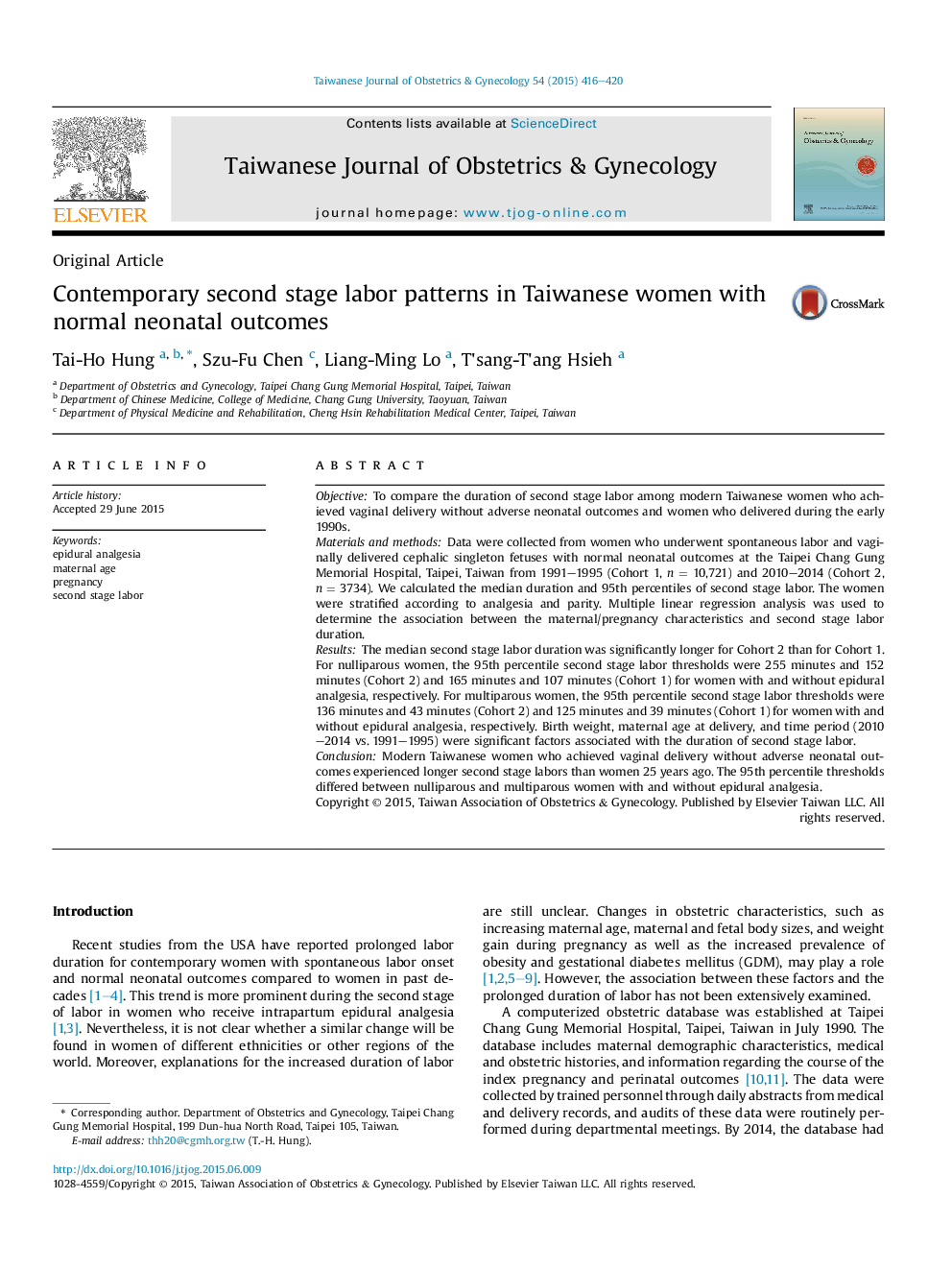| Article ID | Journal | Published Year | Pages | File Type |
|---|---|---|---|---|
| 3975060 | Taiwanese Journal of Obstetrics and Gynecology | 2015 | 5 Pages |
ObjectiveTo compare the duration of second stage labor among modern Taiwanese women who achieved vaginal delivery without adverse neonatal outcomes and women who delivered during the early 1990s.Materials and methodsData were collected from women who underwent spontaneous labor and vaginally delivered cephalic singleton fetuses with normal neonatal outcomes at the Taipei Chang Gung Memorial Hospital, Taipei, Taiwan from 1991–1995 (Cohort 1, n = 10,721) and 2010–2014 (Cohort 2, n = 3734). We calculated the median duration and 95th percentiles of second stage labor. The women were stratified according to analgesia and parity. Multiple linear regression analysis was used to determine the association between the maternal/pregnancy characteristics and second stage labor duration.ResultsThe median second stage labor duration was significantly longer for Cohort 2 than for Cohort 1. For nulliparous women, the 95th percentile second stage labor thresholds were 255 minutes and 152 minutes (Cohort 2) and 165 minutes and 107 minutes (Cohort 1) for women with and without epidural analgesia, respectively. For multiparous women, the 95th percentile second stage labor thresholds were 136 minutes and 43 minutes (Cohort 2) and 125 minutes and 39 minutes (Cohort 1) for women with and without epidural analgesia, respectively. Birth weight, maternal age at delivery, and time period (2010–2014 vs. 1991–1995) were significant factors associated with the duration of second stage labor.ConclusionModern Taiwanese women who achieved vaginal delivery without adverse neonatal outcomes experienced longer second stage labors than women 25 years ago. The 95th percentile thresholds differed between nulliparous and multiparous women with and without epidural analgesia.
